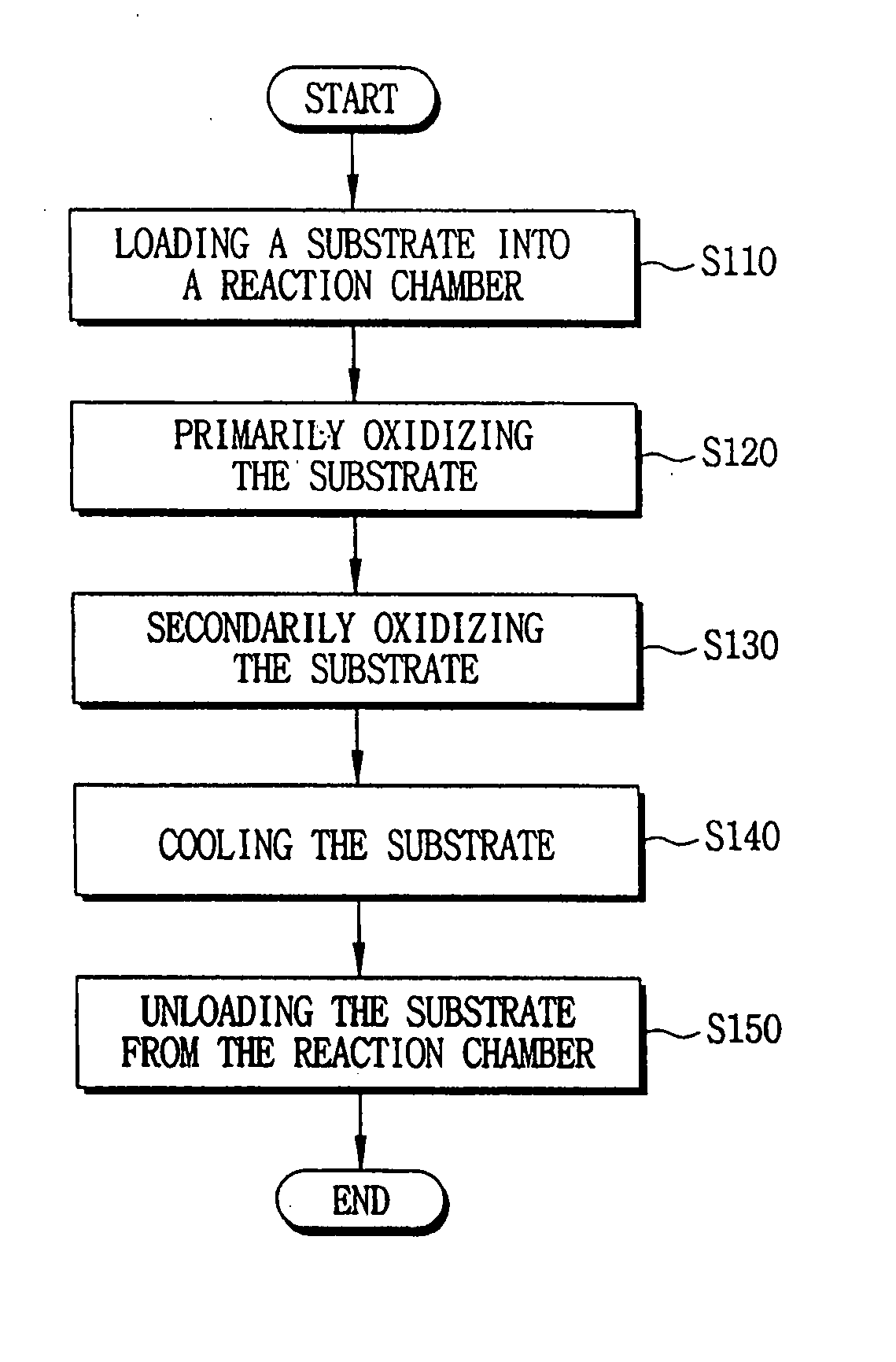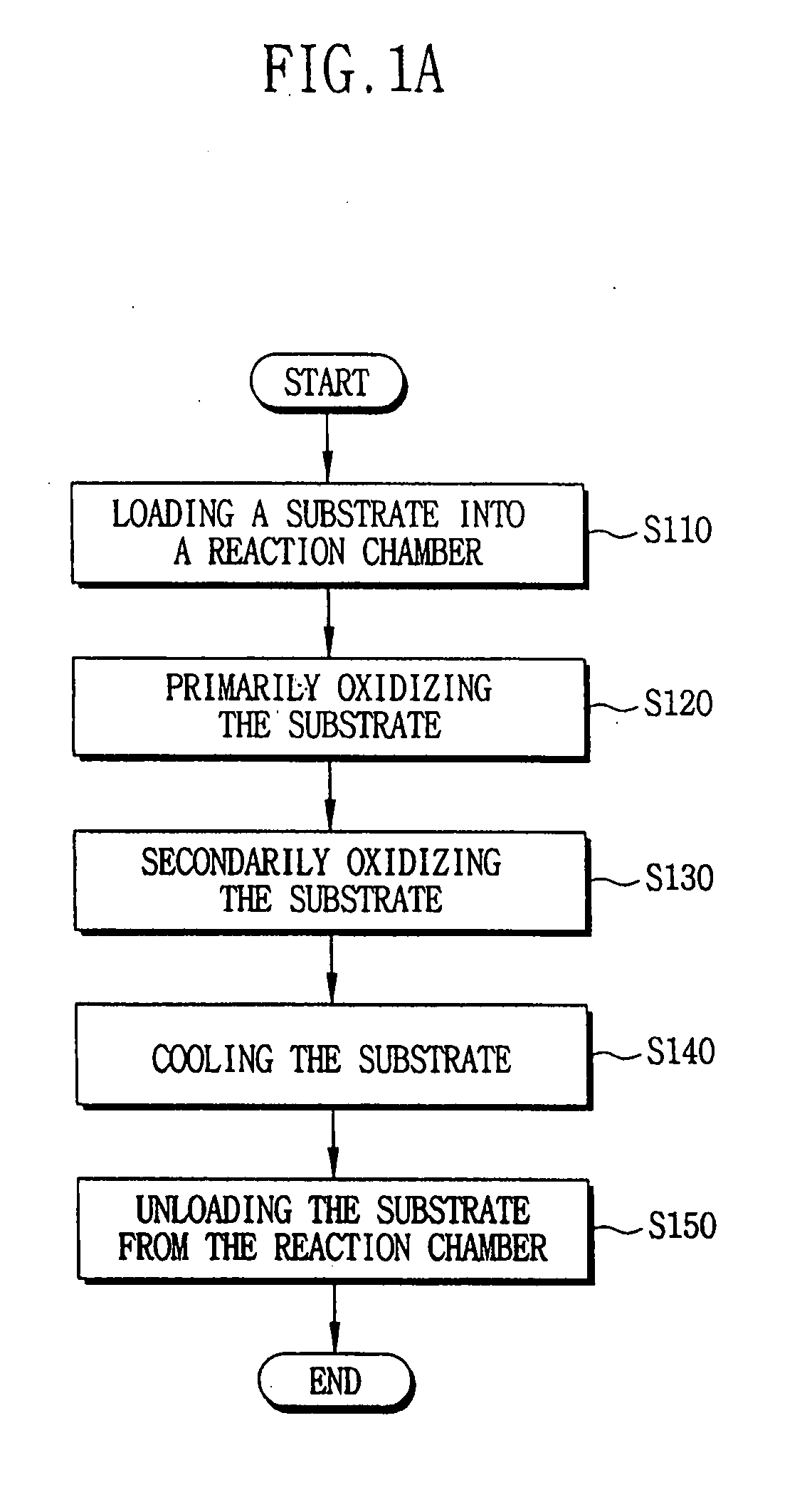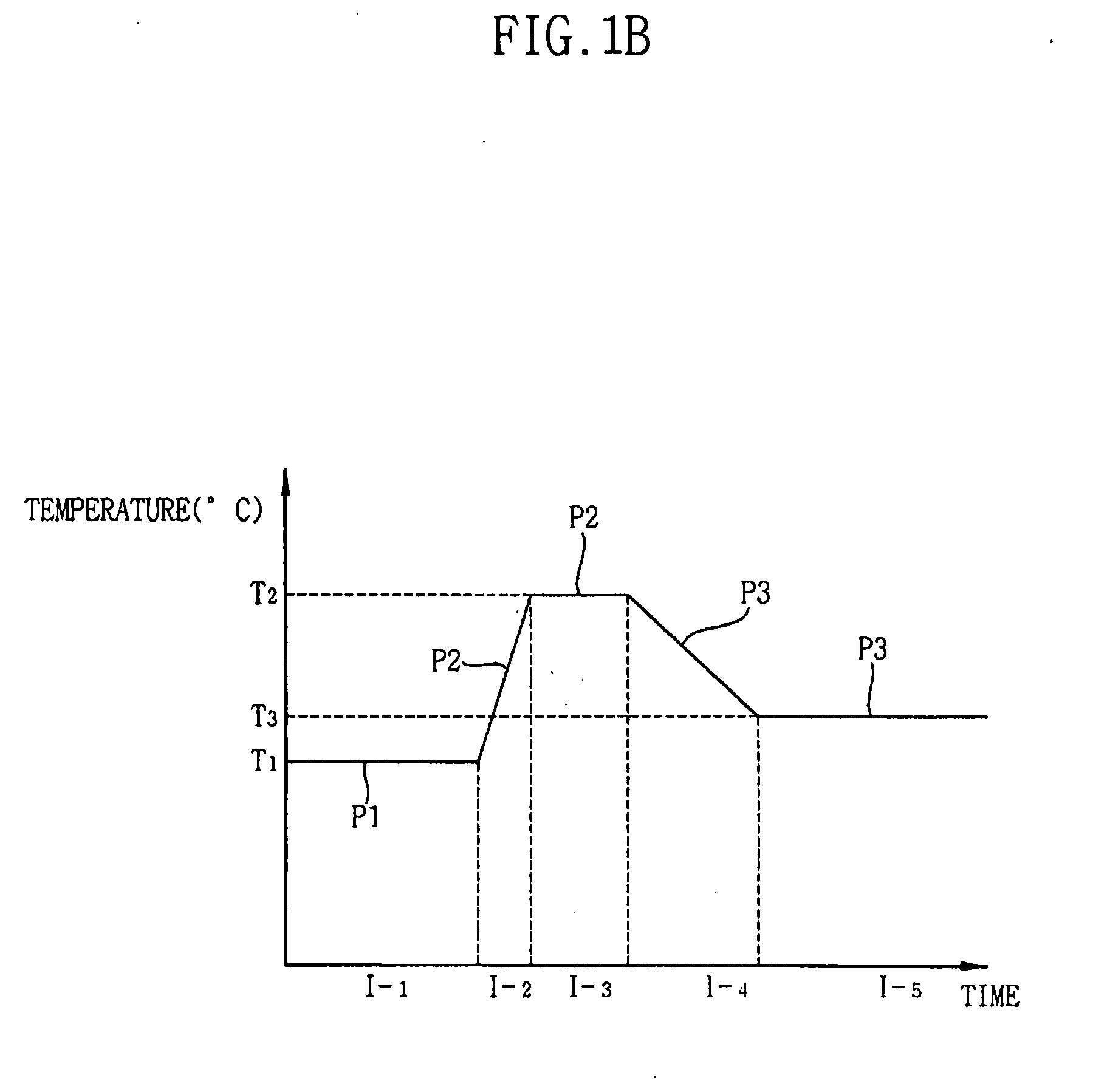Method of forming an oxinitride layer
a technology of oxynitride and oxide layer, which is applied in the direction of basic electric elements, semiconductor/solid-state device manufacturing, electric apparatus, etc., can solve the problems of poor uniformity and quality of batch-type apparatus, thin oxide or oxynitride layer formed in single-type apparatus may have poor electrical characteristics, etc., to improve the reliability of semiconductor devices, improve the efficiency of forming process, and improve the effect of oxynitride layer throughpu
- Summary
- Abstract
- Description
- Claims
- Application Information
AI Technical Summary
Benefits of technology
Problems solved by technology
Method used
Image
Examples
Embodiment Construction
[0054] In the following detailed description, it will be understood that when an element such as a layer, region or substrate is referred to as being “on” or “onto” another element, it can be directly on the other element or intervening elements may also be present.
[0055] U.S. Patent Application Publication number 2002-3258 discloses a method of forming a gate insulation layer including a silicon oxynitride layer that is converted from a hydroxy-silicate layer by a nitration process after forming the hydroxy-silicate layer on a substrate. In this approach, the nitration process is carried out at a temperature of about 200 to about 500° C. and a pressure of about 1 to about 5 Torr to form the silicon oxynitride layer having a thickness of about 7 Å. However, since the nitration process is performed in a single type apparatus such as a rapid thermal nitration (RTN) apparatus, the throughput of the nitration process may be reduced and the characteristics of the silicon oxynitride laye...
PUM
 Login to View More
Login to View More Abstract
Description
Claims
Application Information
 Login to View More
Login to View More - R&D
- Intellectual Property
- Life Sciences
- Materials
- Tech Scout
- Unparalleled Data Quality
- Higher Quality Content
- 60% Fewer Hallucinations
Browse by: Latest US Patents, China's latest patents, Technical Efficacy Thesaurus, Application Domain, Technology Topic, Popular Technical Reports.
© 2025 PatSnap. All rights reserved.Legal|Privacy policy|Modern Slavery Act Transparency Statement|Sitemap|About US| Contact US: help@patsnap.com



